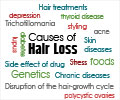Common hair styling products used with heat emit volatile organic compounds, in particular siloxane, which is harmful to health.
- Hair styling products combined with heat release volatile organic compounds (VOCs) that are detrimental to human health
- Decamethylcyclopentasiloxane is the most common toxic VOC released during hair care procedures //
- These airborne harmful contaminants affect the liver, uterus, and upper respiratory tract
Siloxane Emissions and Exposures during the Use of Hair Care Products in Buildings
Go to source).
How do Hair Styling Products Combined with Heat Pollute Air?
Hair care products (HCPs) often contain cyclic volatile methyl siloxanes (cVMS), which might have a negative effect on the environment and public health.A real-time mass spectrometry data measuring the VOC emissions at home showed rapid changes in the chemical composition of air and revealed that cVMS accounted for most of the VOCs that were detected.
The most common volatile organic compound (VOC) released when using hair care products was decamethylcyclopentasiloxane (D5).
The types of hair products, styling equipment, operating temperatures, and hair length all had an impact on the cVMS emission variables during hair care activities. Increasing the hair straightener temperature from room temperature to 210 °C increased cVMS emissions by 50– 310%. The high temperature of styling tools and the high surface area of hair elevated VOC emissions.
How Harmful are VOCs?
Decamethylcyclopentasiloxane (D5) on acute inhalation can be a dermal or eye irritant. Chronic or long-term exposure can impact the liver, uterus, and upper respiratory tract.Adverse effects of siloxane in the liver result in hepatocellular hypertrophy. Additionally, it is hazardous to the uterus and can result in uterine adenomatous polyps, endometrial adenomyosis, and endometrial cancer (2✔ ✔Trusted Source
Decamethylcyclopentasiloxane (D5)
Go to source).
These findings call for further research into hair styling products as well as projected public health awareness.
References:
- Siloxane Emissions and Exposures during the Use of Hair Care Products in Buildings - (https://pubs.acs.org/doi/10.1021/acs.est.3c05156)
- Decamethylcyclopentasiloxane (D5) - (https://pubmed.ncbi.nlm.nih.gov/28092229/)
Source-Medindia















